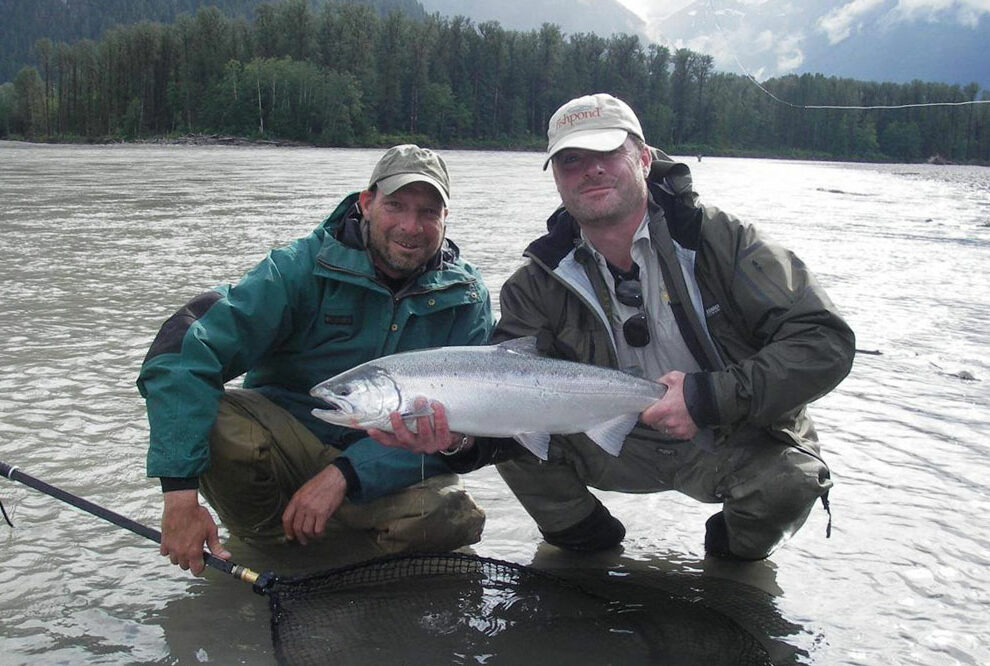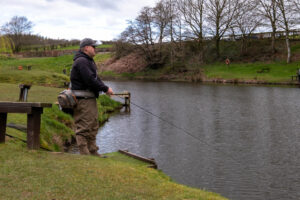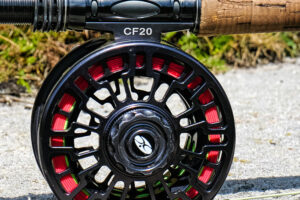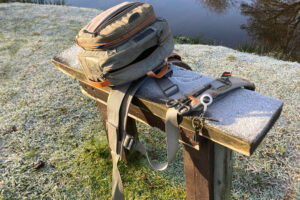At the time of writing, my local rivers are in flood or “blown out” as our USA fly fishing comrades say. The rivers which are closest to me and which I like to go to as often as I can are The Maine and The Sixmile in Co. Antrim. These rivers are currently running more like the mighty Ganges, brown high and at times in the fields.
The rain seems to be lasting all month and lately, while optimistically tying a few dark olives in the hope of getting out soon, I did think I may be better building an Arc.
Obviously, on the Emerald Isle we get a lot of rain, as the old saying goes, you can’t change the weather. This is tolerable if it’s your local area, and you can hold out until better conditions. However, if you have traveled far, it is another matter. For instance, if it is your yearly big fishing trip, one that you have been really looking forward to and maybe saving up for, or worse a once in a lifetime fishing holiday that feels like you have sold a kidney for or remortgaged the house, so you could afford to go.
It is at times like these when a river in full flood can be damn right depressing, and I have seen grown men cry when faced by these circumstances.
I remember hosting a trip many years ago to the mighty Skeena River in British Columbia, when snow melt had turned the river to milk and melted the traveling anglers’ hopes and heads. To be fair, it’s a very long way to go if the conditions are hard. On that trip, very few fish were caught by the group, but I remember catching a Coho at the back of the guide’s boat which was perhaps creating a back eddy which in high conditions can with luck produce a fish.
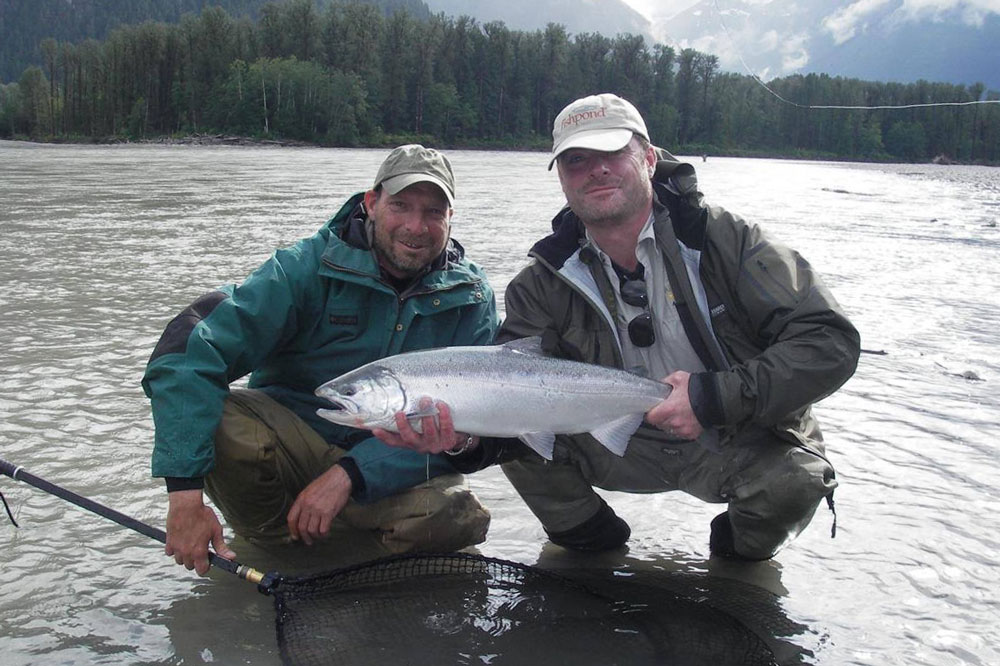
Of course, it may be impossible if the river looks like hot chocolate, basically carrying too much sediment, mud or road wash, and you cannot see your flies at all when they sink. However, there are times that a bit of colour will help.
When I was a kid, my father, who fished for the pot and never owned a car, traveled to rivers by bus or train only often to find them out of order. My Dad was a great fly fisher, though certainly no purist and when the conditions dictated, he would bait fish with the worm or, arguably an even better bait for trout, a white docken grub if he could find one.
I must confess I spent many days doing the same. Finding white grubs for a young boy in the 1970s was almost as much fun as catching trout for the family. Nowadays, many of us so called trout fly anglers, including myself, practice mostly catch and release, especially if it’s a wild fish, this is easy to do if you’re a fly fisher and should be done correctly, what is more, most of the places that my father used to be able to bait fish rightly or wrongly are now fly only.
Currently, in these days of technology, we can normally find out about the water conditions. However, there are times when we cannot, and conditions can always change.
Therefore, what do we do if we do arrive at a river that is high? Do we give up and retire to the warmth of the pub or the fly-tying bench or some other vice, pardon the pun. Not at all, well, not all the time at least, it all depends on just how high and how dirty the river is as there are tactics that will work in high and coloured water.
In fact, sometimes it can be surprising how good fishing can be on a relatively high river. Many fly fishers that chase salmon and sea trout or, in my part of the world, lough run trout know that at times a high river, the colour of good whisky and often a lot darker, can be fantastic when the fish are running.
The method I use for migratory fish in coloured water is I guess a sink and draw retrieve. The sink-and-draw is accomplished by allowing the fly to sink to the preferred depth and then by retrieving upwards toward the surface while bouncing or moving the tip of the rod to bring life to the fly.
I think it was T E Pryce Tannatt who said as far back as 1914 “we must try to impart life into our flies” or words to that affect. My set up normally for running fish in high water when out chasing Dollaghan trout or summer salmon would normally be a fast intermediate line with two flies, most likely a size 8 on the point and maybe a 10 on the dropper on a 12-foot cast, paired with the Cadence CSM 9’ 9in #8 rod, this is a great set up for this type of fishing.
However, what if your quarry is a resident river trout, I would then normally choose the Cadence CSM 9’ #4, CSM 9’ #5 or CSM 10’ #5 for this. In coloured water, I will fish one or, at times, two streamer patterns depending on the size. If it’s a really large fly or very heavy pattern, you are better often fishing one only and shortening your leader.
Only fish a dropper if it is within the rules, some places in the world do not allow this, so it is always worth checking the bye-laws of the waters you’re fishing. In my part of the world, it is allowed, and typically, I will fish two flies, though some may think this is foolish, especially if you’re targeting big fish. Maybe they are right and one day no doubt my dropper will stick in a sunk log while a huge trout is taking a run and scupper me. I know many anglers prefer to fish one fly and when streamer fishing perhaps this is the norm.
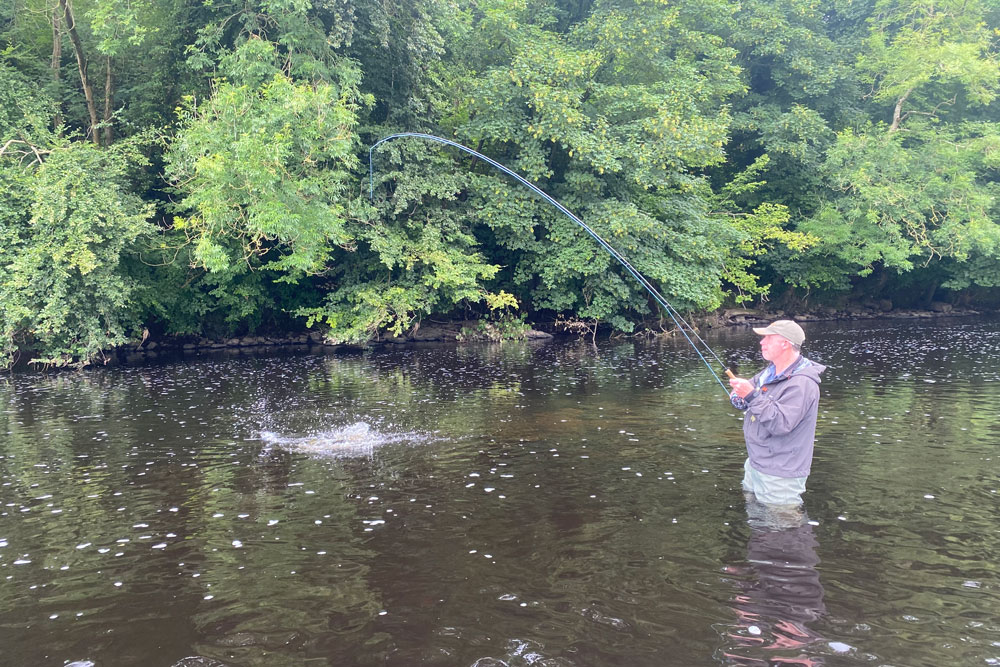
Trout activity will lessen as short-term flooding peaks. There is generally then a second feeding cycle, then as floodwaters drop, the period just before the water fully clears can be a wonderful time to take a fish or two.
Search out the slower moving seams close to the banks, long stretches of fast shallow water that have holes or deep water where fish will seek shelter out of the main flow, other good holding spots are eddies found behind rocks and other obstructions. You will often find fish tucked right up next to the bank during high water times.
The advantage of this high-water fly fishing is that at times it can mean easy fishing. If they are up on the top and feeding on the edges, then a well-presented dry fly in their feeding lane can be just the trick. However, mostly in big water, they are not on top. This is when a streamer stripped through a likely area or even nymphs fished on a dead drift or under an indicator if allowed can work.
Fly size can be important, and I regularly fish big flies in dark water, though if the trout are feeding, small-sized nymphs can work in high water.
Something to think about is at times when the water is cloudy, a big bulky pattern can be just the job, especially when the water is fining out and dark fly patterns with a bit of flash can work well as they stand out and present a bold contrast. Remember, big trout will often take relatively big food items, it is certainly not always just small insects on the menu. I once had a wild brown trout of around 2lb take me when I went to take out my fly, I noticed an unfortunate large crested newts back legs still showing in his mouth.
So be confident if you’re fishing a large fly in dirty water. Vary your retrieve, fish slowly at times, remember trout have fantastic eyesight and if you can see your fly a few inches when it’s sunk the trout certainly can.
Kevins Streamer
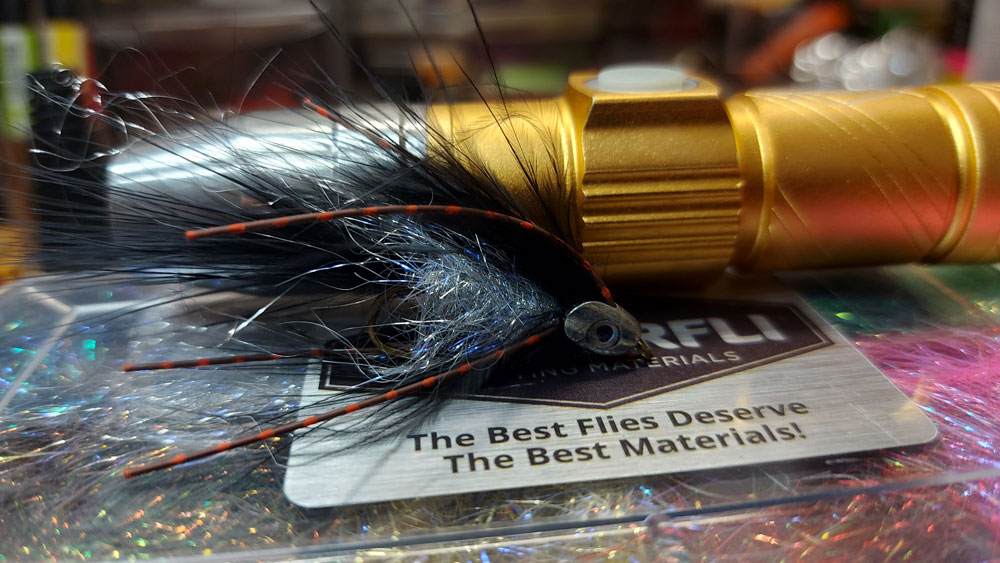
Hook: Partridge Heritage Streamer size 5x
Tail: Black marabou Bloods
Body: Semperfli Silver Ice Dub in a Dubbing Loop
Head Hackle: Black Marabou Blood in a Dubbing Loop
Rubber Legs: Red and Black
Fish Skulls: Silver Small
Streamer fishing is exciting with at times aggressive takes off the fish, it is fast-paced fishing with you casting and retrieving constantly, and it all makes it an incredibly enjoyable experience.
So, get out there and try it out. There is high water and there is high water and there are a few tactics that can save the day and if I had known them when I was younger it would have saved many a worm.
Stay Safe
Do not try to cross a flooded river or stream, watch out for unstable and undermined banks, let someone know where you are going and when you’ll be back. Never underestimate a river at full flow. On certain waters, I would advise a wading stick, as in dirty water you may need to feel your way and a stick will help you greatly. Never wade in a river in full flood.
Tight lines and safe fishing.

